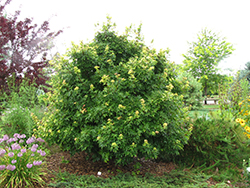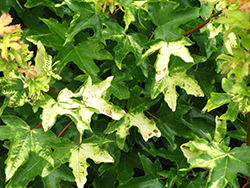Postelense Hedge Maple
Acer campestre 'Postelense'
Height: 30 feet
Spread: 25 feet
Sunlight:
![]()
![]()
Hardiness Zone: 5
Other Names: Field Maple
Description:
The rounded habit of this maple makes it a great choice for hedge/screen use, also for street planting where power lines are not a problem; most beautiful in the fall when its foliage turns gold; some drought tolerance
Ornamental Features
Postelense Hedge Maple is primarily valued in the landscape for its decidedly oval form. It has attractive light green deciduous foliage which emerges lime green in spring. The lobed leaves are highly ornamental and turn an outstanding yellow in the fall.
Landscape Attributes
Postelense Hedge Maple is a dense deciduous tree with a shapely oval form. Its average texture blends into the landscape, but can be balanced by one or two finer or coarser trees or shrubs for an effective composition.
This is a relatively low maintenance tree, and should only be pruned in summer after the leaves have fully developed, as it may 'bleed' sap if pruned in late winter or early spring. It has no significant negative characteristics.
Postelense Hedge Maple is recommended for the following landscape applications;
- Accent
- Hedges/Screening
- Windbreaks and Shelterbelts
Planting & Growing
Postelense Hedge Maple will grow to be about 30 feet tall at maturity, with a spread of 25 feet. It has a low canopy with a typical clearance of 4 feet from the ground, and should not be planted underneath power lines. It grows at a slow rate, and under ideal conditions can be expected to live for 80 years or more.
This tree does best in full sun to partial shade. It is very adaptable to both dry and moist locations, and should do just fine under average home landscape conditions. It is not particular as to soil type, but has a definite preference for alkaline soils. It is highly tolerant of urban pollution and will even thrive in inner city environments. This is a selected variety of a species not originally from North America.

